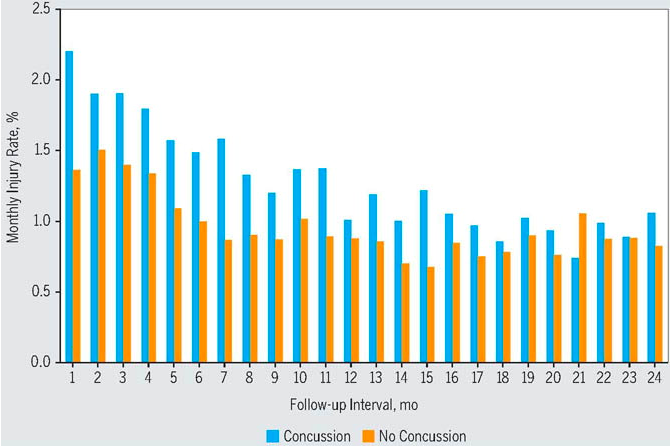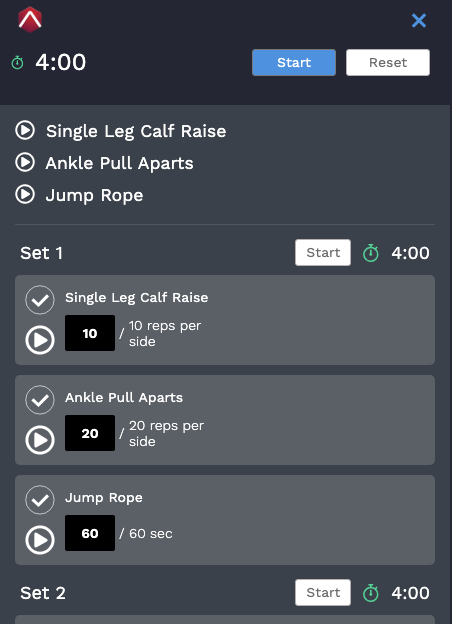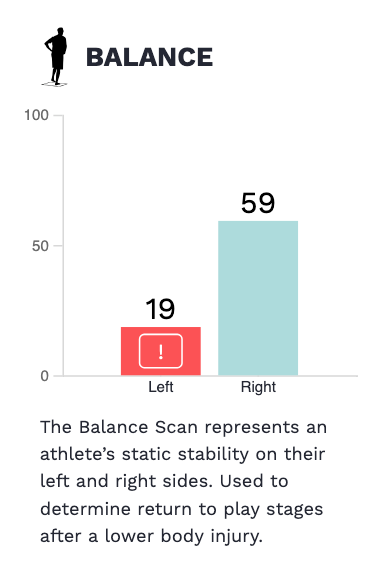
If we are familiar with the literature on injury risk factors, we are aware that time and time again previous injury has been identified as the best predictor of future injury. These future injuries are not always a reoccurrence of the same injury but may be a seemingly “unrelated” injury of a different limb, side, or type. This is rarely a coincidence. Future unrelated injuries can happen from a variety of reasons due to the previous injury such as poor holistic return to play, new compensation patterns introduced, or even psychological factors such as lack of confidence or hesitancy. For example, recent research has shown that there is a dramatic increase in risk of lower extremity injury after a concussion for over a year! Like any injury risk factor, it is important to identify what is modifiable and what isn’t.
“Those who cannot remember the past are condemned to repeat it.”
George Santayana
While previous injury isn’t going to be modifiable (we can’t go back in time!), we are still able to address some of the potential mechanisms of injury. Perhaps these weren’t addressed properly in a rehabilitation setting, have since decayed after a rehab protocol was completed, or are common with these specific types of injuries. Historically injury histories have been addressed with a shotgun approach, by utilizing “prehab” exercises and assigning them to the masses with the hopes of addressing every possible dysfunction.
We often see this solution when therapists, trainers, and coaches write training plans with no assessment or context for the individual. While creating a “balanced” training plan for an individual makes great sense in theory, this implies that we believe (1) every individual is already balanced and (2) every individual is going to respond to our balanced program similarly. Just as with the bulk of our training programs, this assumption can also misguide commonly prescribed “prehab” plans.
Instead of simply throwing the most commonly used rehab exercises into training, we have taken a specific and scientific approach to address these needs. This not only requires an understanding of common injury mechanisms, but a detailed discussion or accurate record of each individual’s injury history. Unfortunately, this is much less common than most think. Injury history plans will be applied to an individual’s overall training plan and can be performed both within a normal session, as well as something done outside of training similar to a soft tissue and flexibility routine.
These plans are based on injury location (e.g. shank, thigh, core, arm) with specific injuries mapped into each of these categories.
Each plan addresses three main areas of need:

1. Eccentric emphasis through full ranges of motion to encourage structural remodeling and lengthening of muscle and tendon tissues (often tonic) to improve resilience and strength.
2. Isolated strengthening movements focusing on monoarticular, or phasic structures that are prone to inhibition to address alignment and stabilization of specific joints.
3. Dynamic or oscillatory movements to address both rhythmic functions (reciprocal inhibition and co-contraction) and improve resistance to fatigue of these stabilizers or aligners, as well as the entire system.
Below is an example of each of these types of movements for different injury history locations.
Each individual’s Movement Signature (as measured from the Jump Scan) gives us insight into their unique movement strategy and can be predictive of future injury risk, but can also relate to previous injury as well. For example, athletes with previous knee injuries often have a high LOAD as they may have gone through rehabilitation but their efficiency of movement is left largely unchanged, or extremely low LOAD as a new compensation has been developed to avoid utilizing ankle and knee joints and in exchange rely on hinging to move.

We also commonly see low BALANCE scores in previously injured individuals on their injured limb, perhaps when a rehab protocol was abandoned. Too much focus on a single side however and we can instead see a low score on the often forgotten “healthy” side as well! When these scores are below a key threshold (48 for the Balance Scan) they are predictive of future injury. These trends are common, but not always the case. We have seen great improvements in individual Jump, Balance, or Plank Scans after injury and rehabilitation as well. When an injury occurs, this often “forces” the individual to take a step back and can create a window of opportunity to improve movement efficiency.
As we are aware of previous injury being the biggest predictor of future injury, it is critical that we acknowledge this and address each individual’s needs based on the past. Utilizing objective movement assessments can also address each individual’s needs based on the present, with the goal of improving outcomes in the future.